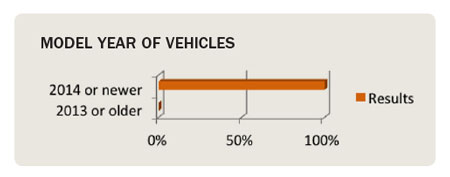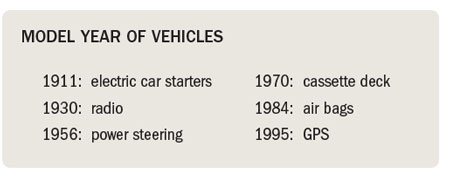By Adamo Donatucci
The last mile of any journey is often the most fraught.
This phenomenon was first conceptualized by utilities and communications providers that were able to, for example, deliver their products to a neighbourhood easily but then experienced challenges connecting individual homes.
Likewise, logistics companies can easily coordinate delivering many goods to a central depot, but often experience difficulty finalizing the delivery to individual homes because a signature is required but the homeowner isn’t available. It’s also the most expensive and time-consuming part of the logistics lifecycle, so there’s a great deal of interest in finding more efficient solutions.
Similar matters occur in the realm of parking: getting to a concert venue downtown is easy enough but finding an affordable parking space nearby can be consuming.
As an increasing proportion of the world’s population lives in urban centres and those centres become increasingly dense, we can expect these dilemmas to worsen over time. To address these matters as they arise, companies are leveraging people’s interconnectedness with technology to develop solutions that are flexible and sustainable.
Last-Mile Parking Technology
Ninety-eight percent of parking transactions today leverage technology at some point in the transaction process. This includes anything from a driver visiting a pay-on-foot kiosk on their way back to their vehicle before leaving a parking garage, looking online to compare rates near their intended destination, to scanning a QR code posted near a parking meter to pay for a session without touching a machine.
In the context of the parking industry, last-mile technology includes everything that makes the driver’s life simpler and more convenient and lets them get to their destination more quickly and efficiently. In practical terms, this means reserved parking with ancillary services like electric vehicle (EV) charging and detailing, or apps that locate…
By Dave Rich and John Abraam
Canada’s automobile future is electric. In recent months both General Motors and Ford have announced their intention to begin transitioning to electric cars and trucks, with GM aiming to produce only EVs by 2035 and Ford and Stellantis (formerly Fiat Chrysler) setting a goal of 40% of their vehicles being electric by 2030. Other automakers are even more ambitious. For instance, Volvo plans to go all-electric by 2030.
The anticipated evolution of Ford and GM cars and trucks from gas power to electric will have enormous implications. Of course, the ultimate goal is to be more sustainable. Eliminating exhaust from millions of cars and trucks could have enormous implications for the environment and the health of Canadians.
The transition won’t come without challenges. The change-over will have an enormous impact on individuals and businesses alike. For instance, it takes longer to recharge an electric vehicle than a gas one; how will that impact people who must drive distances beyond the battery’s range? How will Canada develop sufficient recharging infrastructure? What will happen to gas stations; will they become “juice bars”? These issues will sort themselves out over time, but the answers won’t come without hurdles.
Parking, in particular, will feel the impact. Parking facilities will be the most important charging location, aside from the driver’s home. After all, where else do people leave their vehicles for long enough periods of time to fully charge an electric car or truck?
And parking owners aren’t ready.
Most owners of parkades and complexes with parking assets don’t have the infrastructure in place to provide widespread EV charging. Even those that do offer charging usually only have a handful of EV charging stations on hand. That may be sufficient today, when a relatively small percentage…
Smart Cities are the way of the future. Every city in Canada is already planning its evolution into a Smart City and some are beginning to implement the initial elements.
The success of this evolution will depend largely on parking technology. Drivers—and eventually those in autonomous vehicles—need to park, and making it easier to park will dramatically reduce congestion on city streets. In the not-too-distant-future, when we leave the house, we’ll just enter our destination into our car’s GPS and then the car will guide us directly to the closest available parking space to that destination. If we haven’t already reserved and paid for a parking space in advance, we’ll be able to pay with our cell phones. If we need more time than we paid for, we’ll get a text reminding us when it’s time to move the car and asking if we want to pay for more parking—which we can do with our cell phones, without returning to the car.
The Foundation of Smart Cities
Intelligent parking technology will play the key role. Intelligent parking uses parking guidance sensors located in or over parking spaces to monitor whether they are occupied or available, and transmits that information to strategically located signs to guide vehicles directly to available spaces.
Parking guidance is already common in parkades throughout Canada. While it’s primarily used as a driver amenity designed to make it easier to quickly and conveniently find an available parking space, it also helps parking organizations better manage their assets by providing real-time data about how those assets are being utilized. Additionally, parking guidance also helps organizations increase their occupancy by eliminating the risk that drivers will give up looking for a space and…
Over the last decade, an overwhelming amount of literature has been produced in the public transportation field regarding Millennials and the future of personal vehicle ownership, and therefore the future of Municipal Parking lots. Most of the research indicates that Millennials are generally less car-focused than previous generations, and their transportation behaviours continue to change in ways that ultimately reduce personal vehicle driving. There are plenty of reasons that have contributed to this ‘shift’ in behaviour, including: dependence on technology, socioeconomic contributors (delayed marriage, the Recession), and lifestyle preferences (Millennials tend to prefer walkable communities). Recent studies and dialogues surrounding Smart Cities suggest City Planners are beginning to ‘rethink parking…by getting rid of it.’ At the centre of the dialogue surrounding the future of parking in cities is an assumption that Millennials apprehensiveness to drive and own private vehicles. This will predict future travel behaviours by them, and generations to come.
Re-thinking parking by getting rid of it is not only short-sighted but does not fully take into consideration the travel patterns of Millennials. While some Millennials have certainly chosen to fore-go vehicle ownership, particularly in dense urban centres like downtown Toronto, Millennials surrounding the GTA in less dense cities, for example Mississauga, are still choosing to use a personal vehicle to move around.
While the technology surrounding self-driving cars is in place, and continues to evolve, the governing regulations surrounding self-driving cars are still in their infancy. Self-driving cars may eventually reduce parking demand considerably and will certainly change the way users pay for parking. It is reasonable that there be an emphasis on ensuring all future parking garages must be built in a manner that would allow for ‘future-proofing’ for self-driving cars, or to accommodate other uses if there…
An interview with Shawn Skrine
By gtechna
In advance of this year’s Canadian Parking Association Conference held in Banff, Alberta, Banff’s Shawn Skrine sat down with gtechna, a Montreal-based eCitation and parking software company, for an interview that revealed some interesting points about what exactly makes a city “smart”.
Banff is a resort town located inside a national park, which means it has a small number of permanent residents and a seasonal population that fluctuates widely. Embracing cutting-edge parking technology has allowed Banff to easily accommodate the annual influx of tourist traffic; a great reminder that being a smart city is more about innovation than population!
Can you describe for us what parking is like in Banff?
We have five full time enforcement officers and in the summer, two to three seasonal officers. Our officers use two vehicles and two bikes to patrol roughly 2,000 spaces that we have downtown.
We have several surface lots, one four-story parking structure, and a good deal of street parking. All of our parking is time-limited, but free.
How does Banff’s high volume of tourists affect the parking situation?
To be honest with you, it’s more of the locals that were affected when we started implementing time-limit parking than it was the tourists, because tourists seem to look for signs.
We started time-limiting the parking to change behavior, which seems to have happened. Now after three years, there’s been about a 30% increase in time-limit compliance. The number of tickets issued for time-limit offences has been reduced and downtown parking turnover has improved, which is what we wanted.
What are the rules you use for time-limited parking?
It varies. Our zones range from 15-minute limits all the way to nine-hour limits. Streets usually have either two-hour or 15-minute limits, parking lots are all three hours, the parking structure has two-hour and eight-hour spaces, and there are…
By Chelsea Webster
Let’s start the first mile of this journey by setting a goal for reading this article: learning what first mile and last mile means in relation to transportation, and finding ways for the parking industry to embrace (and maybe even capitalize) on this growing urban challenge.
The Rise of Public Transit
If you live in a city, you likely understand that public transit is an important part of city life. As more of the world’s population moves into cities, and cities aren’t able to accommodate the demand for individual cars and parking, transit will continue to grow in importance. There are lots of articles already touting that the personal vehicle is falling as king of transportation. As this process happens, it will be even more critical to make taking alternate methods of transportation as easy as possible.
If you’ve ever tried to take public transportation, you’re likely aware of a big setback inherent in any transit system: it doesn’t come right to your door.
So, if people aren’t willing to walk to the “nearest” transit stop, but still want to take the train or subway or express bus, how do they get to that transit stop? The process is called first mile (getting from your house or starting point to the transit stop) and last mile (getting from where transit lets you off to your actual destination) commuting.
We Love Our Cars
Thanks to the automobile revolution, we’ve seen the personal vehicle have a massive economic impact. Highways were built, automotive factories churned out vehicles of all sorts, and a whole new parking industry sprang up – all of which created hundreds of thousands of jobs in Canada and the US. With the ability for the average person to own a vehicle, people had the freedom to live and travel to places previously…
By Chelsea Webster
Let’s start out with a quick poll:
What model year is your vehicle?
Okay so there was only one respondent, but I think it’s safe to say that with new car sales of 3.8 million in Canada1 and 34.5 million in the US in the last 2 years2, there are a LOT of vehicles on our roads that are a 2014 model year or newer.

Why does this matter?
Consider this quick rundown of the major car advances to land in our vehicles.

So, now that internet connectivity is showing up in cars, you can see how such a big change is cause for discussion. We’re basically taking the Internet of Things (if this term isn’t familiar, it’s the concept that everything is now connected on the internet – from your home thermostat to your heart rate monitor to the security camera on the street4) and applying it to vehicles. This concept of the fully connected and communicative vehicle is called the Internet of Vehicles (or IoV as we’ll refer to it).
IoV Fundamentals
Overall, the IoV is a massive network of connection points to the internet which are in constant communication. It’s meant to guide and supervise vehicles while providing abundant multimedia and mobile Internet application services. There are several components to understand within IoV, so let’s go over a few details.
Why would we want this? There are four main benefits of IoV5: safety (if you know the car in front of you is stopping, you can brake early); environmental damage mitigation (use less horsepower to reduce emissions); energy conservation (maximize efficiency in gas consumption); and intelligent communication (avoid a traffic jam, construction, or pay for parking).
Who is the car communicating with? There are several important groups…
By Chelsea Webster
Parking is an easy first step for a municipality to take towards becoming a smart city because the technology already exists, and it can be tested and proven with minimal resources.
Key points
- A Smart City is defined by sensors that collect information and relay it to a hub, which recommends actions based on data analysis. Smart parking is applying this concept to parking.
- Citizen and government engagement and interaction is critical to the success and long term viability of the smart city concepts.
- Smart parking is a subset of the smart city concept that’s easily implemented; pros and cons exist, however the net impact is positive.
- Many other technologies (like autonomous vehicles) are impacting the adoption of smart parking and often creating more questions than answers.
Action: Three actionable suggestions can be found at the end of the article if you are interested in implementing smart parking in your municipality.
What is a Smart City?
The term “Smart City” has been making the rounds lately, and I’d venture a guess you’ve heard it once or twice by now (or perhaps you live and work outside the realm of this concept, which is fine too). But for everyone who has heard it, as much as for those who haven’t, what does it actually mean? For all the hype, it still isn’t listed on Dictionary.com or Merriam-Webster. A smart city is a broad concept, with no precedent, and as of yet, there aren’t set standards as to what defines a city as smart. Oh. Now what?
There are a lot of working pieces involved in the smart city concept, but let’s break it down into two key components: technology (physical and virtual requirements) and data (collection and application).
1. Technology
This is the network of sensors, cameras, and other devices that get built into the…










